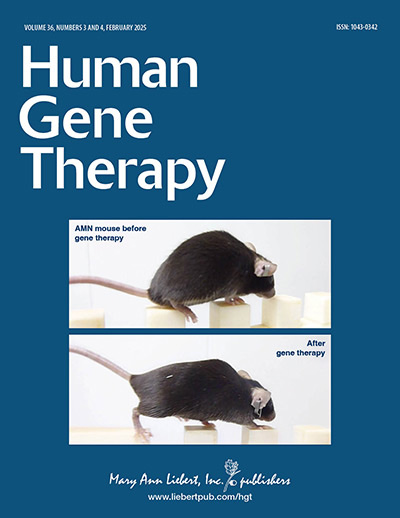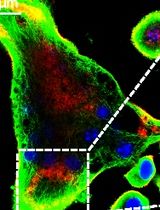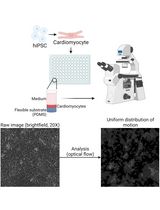- EN - English
- CN - 中文
Isolation and Culture of Ferret Airway Stem Cells
雪貂气道干细胞的分离与培养
发布: 2025年07月20日第15卷第14期 DOI: 10.21769/BioProtoc.5399 浏览次数: 1346
评审: Wendy Leanne HempstockAnonymous reviewer(s)

相关实验方案
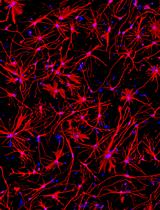
产生人类诱导多能干细胞 (hiPSC) 衍生的星形胶质细胞,用于研究肌萎缩侧索硬化症和其他神经退行性疾病
Katarina Stoklund Dittlau [...] Ludo Van Den Bosch
2024年02月20日 5166 阅读
Abstract
Well-differentiated airway epithelial cultures are commonly used to study airway stem cell lineages, ion and fluid transport, respiratory virus infection and replication, and disease mechanisms in vitro. This culture model involves the isolation and expansion of airway stem cells followed by their differentiation at an air–liquid interface (ALI), a process that has been previously documented in humans and mice. Domestic ferrets (Mustela putorius furo) have gained considerable importance in respiratory disease research due to their notable susceptibility to these conditions and their anatomical similarities to humans. Here, we present a comprehensive description of the isolation and culture of stem/progenitor cells from the ferret airway, along with a protocol for their differentiation at the ALI. Our findings have demonstrated that this ferret culture system not only supports the differentiation of the predominant airway epithelial cell types but also facilitates the generation of rare airway epithelial subpopulations, including pulmonary ionocytes, tuft cells, and pulmonary neuroendocrine cells. Additionally, we provide a detailed procedure for measuring transepithelial ion transport relevant to airway diseases, particularly cystic fibrosis. The ability to isolate and culture ferret airway stem cells, combined with ALI differentiation and functional assessment of transepithelial ion transport, offers a powerful platform for evaluating genetic and pharmacologic interventions related to cystic fibrosis.
Key features
• A protocol for isolating ferret airway basal cells and generating air–liquid interface (ALI) cultures for electrophysiologic research.
• Detailed procedures for propagating ferret airway basal cells and culturing in vitro well-differentiated airway epithelium.
• A protocol for measuring ion transport, conductance, and immunofluorescence to identify airway cell types.
Keywords: Transgenic ferrets (转基因雪貂)Graphical overview
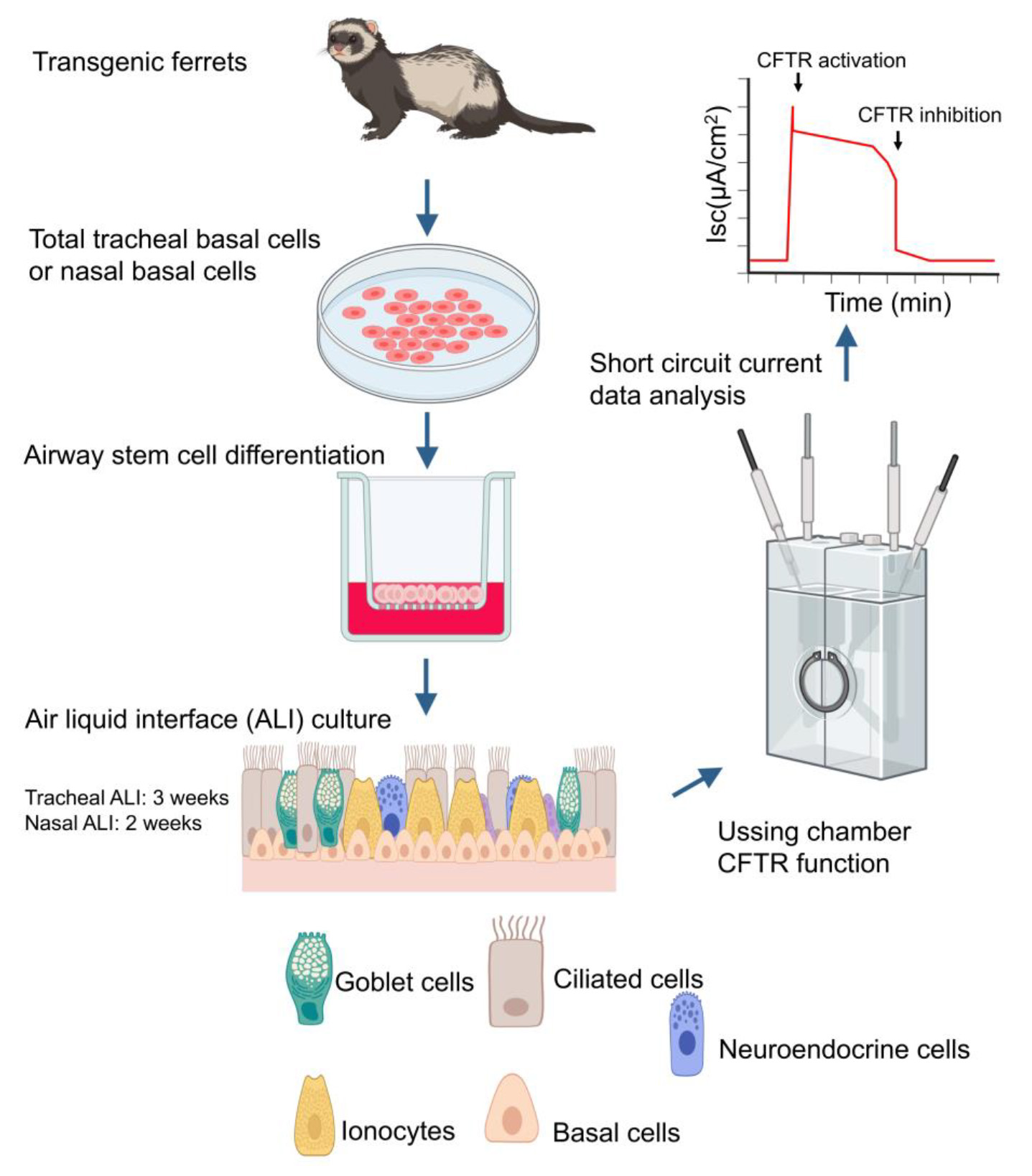
Background
The ferret, Mustela putorius furo, has proven to be an invaluable model for research into complex pulmonary conditions, including cystic fibrosis (CF) [1–4], idiopathic pulmonary fibrosis (IPF) [5], and chronic obstructive pulmonary disease (COPD) [6], the infection and transmission of respiratory viruses, such as influenza viruses [7,8], and neurological research [7,9]. Ferrets are a mid-sized experimental animal model with anatomical and physiological similarities to humans [10], particularly the respiratory system, offering a balance between practicality and biological relevance to bridge the gap between nonhuman primates and the widely utilized rodent models [4,11,12]. In the airway anatomy, ferrets and humans have submucosal glands in the cartilaginous airways, similar distribution patterns of goblet cells in the proximal airway, and club cells across the distal airway and respiratory bronchioles [10].
Human airway epithelium (HAE) air–liquid interface (ALI, HAE-ALI) cultures, which comprise multiple epithelial cell types and recapitulate the pseudostratified structure of the proximal airway epithelium, represent an invaluable in vitro model system for investigating the physiology and pathophysiology of human airways. In CF research, ALI cultures derived from CF patient donors enable the study of cystic fibrosis transmembrane regulator (CFTR) function, including chloride and bicarbonate transport and other aspects that are altered in CF, such as airway surface liquid (ASL) chemistry, pH, and hydration. In the past, human ALI cultures were a crucial resource in studying CF. However, the utility of these cultures encounters several limitations, including difficulties in obtaining adequate materials, limitations in airway basal cell passage capacity, and challenges related to airway basal cell expansion.
The successful establishment of CF ferret models provides a compelling alternative [1–3,13]. Polarized ferret airway epithelium (FAE) cultured at an ALI (FAE-ALI) differentiated from the base cells of CF animals comprises not only the predominant airway epithelial cell types but also rare airway epithelial subpopulations, including pulmonary ionocytes, tuft cells, and pulmonary neuroendocrine cells. Importantly, we have established culture conditions to enrich and expand the primary ferret airway stem/progenitor cells from the nose, trachea, and bronchi tissues. These stem/progenitor cells retain their differentiated capacity for up to 12 passages.
Notably, the pulmonary ionocyte has been identified as showing high levels of CFTR mRNA expression [11,14] and protein in the apical cap [15] in the airway epithelium. Their function in the airway has been recognized, including involvement in fluid absorption [15,16], secretion [15], pH regulation [15,17], and mucociliary clearance [15]. Pulmonary ionocytes represent a rare epithelial cell type, like tuft cells and pulmonary neuroendocrine cells (PNEC); their functions remain to be thoroughly explored. In this protocol, we aimed to create a method for isolating and culturing ferret airway stem cells from any airway location. Additionally, we sought to develop ALI cultures capable of continuously producing rare epithelial cell types and examining transepithelial ion transport functions. This protocol for culturing ferret airway stem cells is particularly valuable for investigating CF and exploring potential therapeutic interventions.
Materials and reagents
Biological materials
1. Ferret airway tissue (National Ferret Resource and Research Center)
2. 804G cell line (a rat bladder carcinoma cell line, a gift from Jayaraj Rajagopal Laboratory) [18]
Reagents
1. Pronase (Roche, catalog number: 11459643001)
2. Accutase (StemCell Technology, catalog number: 07920)
3. Hydrocortisone stock solution (StemCell Technology, catalog number: 07925)
4. Heparin sodium salt (StemCell Technology, catalog number: 07980)
5. Penicillin-streptomycin (Gibco, catalog number: 15140122)
6. Protease from Streptomyces griseus, type XIV (Millipore Sigma, catalog number: P5147)
7. CryoStor® CS10 (StemCell Technology, catalog number: 07930)
8. PneumaCultTM-Ex Plus basal medium (StemCell Technology, catalog number: 05041)
9. PneumaCultTM-Ex Plus 50× supplement (StemCell Technology, catalog number: 05042)
10. PneumaCultTM-ALI basal medium (StemCell Technology, catalog number: 05002)
11. PneumaCultTM-ALI 10× supplement (StemCell Technology, catalog number: 05003)
12. PneumaCultTM-ALI maintenance 100× supplement (StemCell Technology, catalog number: 05006)
13. F-12 medium (Gibco, catalog number: 11765-054)
14. RPMI medium 1640 (Gibco, catalog number: 11875-093)
15. GlyH101 (TOCRIS, catalog number: 5485)
16. Amiloride hydrochloride hydrate (Millipore Sigma, catalog number: A7410-1G)
17. DIDS disodium salt (Millipore Sigma, catalog number: 309795)
18. 3-Isobutyl-1-methylxanthine (Millipore Sigma, catalog number: I5879)
19. Forskolin (Millipore Sigma, catalog number: F6886)
20. DPBS without Ca2+ and Mg2+ (Gibco, catalog number: 14190144)
21. Donkey serum non-sterile (Equitech-Bio, catalog number: DS-05-1000)
22. Minimum essential medium (Gibco, catalog number: 11095080)
23. Fetal bovine serum (FBS) (Gibco, catalog number: 26140079)
24. Primaxin® (imipenem/cilastatin, prescription drug at the pharmacy)
25. Amphotericin B (Millipore Sigma, catalog number: A2942)
26. Ceftazidime (Millipore Sigma, catalog number: C3809)
27. Gentamicin solution (IBI Scientific, catalog number:1405-41-0)
28. Paraformaldehyde solution (PFA), 4% in PBS (Thermo Scientific, catalog number: J19943-K2)
29. CaCl2 (Research Products International, catalog number: C20010)
30. NaCl (Research Products International, catalog number: S23025)
31. MgCl2 (Research Products International, catalog number: M25000)
32. NaHCO3 (Research Products International, catalog number: S25060)
33. Dextrose (Research Products International, catalog number: G32045)
34. HEPES, free acid (Research Products International, catalog number: H75030)
35. KH2PO4 (Research Products International, catalog number: P41200)
36. K2HPO4 (Research Products International, catalog number: P41425)
37. Mg-gluconate (Millipore Sigma, catalog number: G9130)
38. Na-gluconate (Millipore Sigma, catalog number: G9005)
39. Ca-gluconate (Millipore Sigma, catalog number: G4625)
40. Sodium citrate (Research Products International, catalog number: S23045)
41. Aqua-mount (Epredia, catalog number: 13800)
42. ProLong glass antifade mountant (Invitrogen, catalog number: P36980)
43. DAPI and Hoechst nucleic acid stains (Thermo Scientific, catalog number: 62249)
44. TritonTM X-100 (Millipore Sigma, catalog number: X100-5ML)
45. TWEEN 20 (Millipore Sigma, catalog number: P6585-10ML)
46. Anti-NKA (DSHB UIOWA, catalog number: a5, working dilution: 1/100, ionocyte marker)
47. Anti-CFTR (cftrantibodies.web.unc.edu, catalog number: 596, working dilution: 1/200, ionocyte marker)
48. Anti-acetylated tubulin (Sigma-Aldrich, catalog number: T7451, working dilution: 1/1000, ciliated cell marker)
49. Anti-SYP (Santa Cruz Biotechnology, catalog number: sc-17750, working dilution: 1/200, pulmonary neuroendocrine cell marker)
50. Anti-BSND (Abcam, catalog number: ab196017, working dilution: 1/400, ionocyte marker)
51. Anti-ATP6V1G3 (Sigma-Aldrich, catalog number: HPA028701, working dilution: 1/300, ionocyte marker)
Solutions
1. 804 G culture media (see Recipes)
2. PneumaCultTM-Ex Plus basal cell culture media (see Recipes)
3. PneumaCultTM-ALI airway differentiation media (see Recipes)
4. High chloride buffer (see Recipes)
5. Low chloride buffer (see Recipes)
6. K- buffer (see Recipes)
7. Bicarbonate buffer (see Recipes)
8. Donkey serum blocking buffer (see Recipes)
9. Donkey serum dilution buffer (see Recipes)
10. 4× MEM wash media with antibiotics (see Recipes)
11. F12 wash media with antibiotics (see Recipes)
12. Pronase digestion media (see Recipes)
13. Protease digestion media (see Recipes)
14. Sodium citrate buffer (see Recipes)
Recipes
1. 804 G culture media
Note: The media is filtered in a Corning 500 mL filter system and stored at -20 °C for a year; it can be warmed up at 37 °C in a Thermo Scientific Precision water bath.
| Reagent | Final concentration | Amount |
|---|---|---|
| RPMI medium 1640 | n/a | 445 mL |
| FBS | n/a | 50 mL |
| Penicillin-streptomycin | n/a | 5 mL |
| Total | n/a | 500 mL |
2. PneumaCultTM-Ex Plus basal cell culture media
Note: The media is filtered in a Corning 500 mL filter system and stored at 4 °C for a month; it can be warmed up at 37 °C in a Thermo Scientific Precision water bath.
| Reagent | Final concentration | Amount |
|---|---|---|
| PneumaCultTM-Ex Plus basal medium | n/a | 484.5 mL |
| PneumaCultTM-Ex Plus 50× supplement | n/a | 10 mL |
| Penicillin-streptomycin | n/a | 5 mL |
| Hydrocortisone stock solution | n/a | 0.5 mL |
| Total | n/a | 500 mL |
3. PneumaCultTM-ALI airway differentiation media
Note: The media is filtered in a Corning 500 mL filter system and stored at 4 °C for a month; it can be warmed up at 37 °C in a Thermo Scientific Precision water bath.
| Reagent | Final concentration | Amount |
|---|---|---|
| PneumaCultTM-ALI basal medium | n/a | 439 mL |
| PneumaCultTM-ALI 10× supplement | n/a | 50 mL |
| PneumaCultTM-ALI maintenance 100× supplement | n/a | 5 mL |
| Heparin sodium salt | n/a | 1 mL |
| Penicillin-streptomycin | n/a | 5 mL |
| Total | n/a | 500 mL |
4. High chloride buffer
Note: Use ddH2O to dissolve. Adjust to pH 7.4 with NaOH, filter, and store at 4 °C for one month.
| Reagent | Final concentration | Amount |
|---|---|---|
| NaCl | n/a | 7.89 g |
| HEPES Acid | n/a | 1.192 g |
| Dextrose | n/a | 1.3572 g |
| MgCl2 (1 M stock solution) | 1.2 mM | 1.2 mL |
| CaCl2 (1 M stock solution) | 1.2 mM | 1.2 mL |
| KH2PO4 (1 M stock solution) | 0.6 mM | 0.6 mL |
| K2HPO4 (1 M stock solution) | 2.4 mM | 2.4 mL |
| Total | n/a | 1,000 mL |
5. Low chloride buffer
Note: Use ddH2O to dissolve. Adjust to pH 7.4 with NaOH, filter, and store at 4 °C for one month.
| Reagent | Final concentration | Amount |
|---|---|---|
| Na-gluconate | n/a | 29.95 g |
| HEPES acid | n/a | 1.192 g |
| Dextrose | n/a | 1.3572 g |
| MgCl2 (1 M stock solution) | 1.2 mM | 1.2 mL |
| CaCl2 (1 M stock solution) | 1.2 mM | 1.2 mL |
| KH2PO4 (1 M stock solution) | 0.6 mM | 0.6 mL |
| K2HPO4 (1 M stock solution) | 2.4 mM | 2.4 mL |
| Total | n/a | 1,000 mL |
6. K- Buffer
Note: Use ddH2O to dissolve. Adjust to pH 7.4 with HCl, filter, and store at 4 °C for one month.
| Reagent | Final concentration | Amount |
|---|---|---|
| NaCl | n/a | 6.94 g |
| NaHCO3 | n/a | 2.1 g |
| Dextrose | n/a | 0.091 g |
| MgCl2 (1 M stock solution) | 1.2 mM | 1.2 mL |
| CaCl2 (1 M stock solution) | 1.2 mM | 1.2 mL |
| KH2PO4 (1 M stock solution) | 0.6 mM | 0.6 mL |
| K2HPO4 (1 M stock solution) | 2.4 mM | 2.4 mL |
| Total | n/a | 1,000 mL |
7. Bicarbonate buffer
Note: Use ddH2O to dissolve. Adjust to pH 7.4 with H2SO4, filter, and store at 4 °C for one month.
| Reagent | Desired concentration | Amount |
|---|---|---|
| Na-gluconate | 118.9 mM | 25.94 g |
| NaHCO3 | 25 mM | 2.1 g |
| Dextrose | 5 mM | 0.901 g |
| Mg-gluconate | 1 mM | 0.415 g |
| Ca-gluconate | 5 mM | 2.152 g |
| KH2PO4 solution (1 M) | 0.6 mM | 0.6 mL |
| K2HPO4 solution (1 M) | 2.4 mM | 2.4 mL |
| Total | n/a | 1,000 mL |
8. Donkey serum blocking buffer
Note: Filter and freeze aliquots (5 mL per aliquot) at -20 °C. Aliquots can be stored at -20 °C for a year or for ~2 weeks at 4 °C.
| Reagent | Final concentration | Amount |
|---|---|---|
| Donkey serum | n/a | 10 mL |
| CaCl2 | 2.5 M | 20 μL |
| 10% Triton X | n/a | 250 μL |
| DPBS | n/a | 39.730 mL |
| Total | n/a | 50 mL |
9. Donkey serum dilution buffer
Note: Filter and freeze aliquots (5 mL per aliquot) at -20 °C. Aliquots can be stored -20 °C for a year or for ~2 weeks at 4 °C.
| Reagent | Final concentration | Amount |
|---|---|---|
| Donkey serum | n/a | 500 μL |
| CaCl2 (2.5 M stock solution) | 1 mM | 20 μL |
| 10% Triton X | n/a | 250 μL |
| DPBS | n/a | 49.230 mL |
| Total | n/a | 50 mL |
10. 4× MEM wash media with antibiotics
Note: Filter and freeze aliquots at -80 °C or -20 °C. Aliquots can be stored at -20 °C for a year.
| Reagent | Final concentration | Amount |
|---|---|---|
| Minimum essential medium | n/a | 473.75 mL |
| Primaxin (5 mg/mL stock solution) | 0.1 mg/mL | 10 mL |
| Amphotericin B (125 μg/mL stock) | 1 μg/mL | 4 mL |
| Ceftazidime (50 mg/mL stock solution) | 0.1 mg/mL | 1 mL |
| Gentamicin (50 mg/mL stock solution) | 0.125 mg/mL | 1.25 mL |
| Penicillin-streptomycin | n/a | 10 mL |
| Total | n/a | 500 mL |
11. F12 wash media with antibiotics
Note: Filter and store for ~1 month at 4 °C.
| Reagent | Final concentration | Amount |
|---|---|---|
| F-12 medium | n/a | 44.5 mL |
| FBS | n/a | 5 mL |
| Penicillin-streptomycin | n/a | 500 μL |
| Total | n/a | 50 mL |
12. Pronase digestion media
| Reagent | Final concentration | Amount |
|---|---|---|
| F-12 medium | n/a | 10 mL |
| Pronase | n/a | 100 mg |
| Total | n/a | 10 mL |
13. Protease digestion media
| Reagent | Final concentration | Amount |
|---|---|---|
| 4× MEM wash media | n/a | 10 mL |
| Protease, type XIV | n/a | 15 mg |
| Total | n/a | 10 mL |
14. Sodium citrate buffer
Note: Adjust pH to 6.0 with HCl.
| Reagent | Final concentration | Amount |
|---|---|---|
| Sodium citrate | n/a | 2.94 g |
| ddH2O | n/a | 1,000 mL |
| Tween 20 | n/a | 0.5 mL |
| Total | n/a | 1,000 mL |
Laboratory supplies
1. Corning 6.5 mm Transwell® with 0.4 μm pore polyester membrane insert (Corning, catalog number: 3470)
2. Corning cell strainer 100 μm nylon (Corning, catalog number: CLS431752)
3. Premium touch nitrile gloves (Laboratory Products Sales, catalog numbers: 1720-PF, 1721-PF, 1722-PF)
4. FisherbrandTM sterile polystyrene disposable serological pipettes with magnifier stripe (Thermo Fisher Scientific, catalog numbers: 1367811, 1367811D, 1367811E)
5. InvitrogenTM CountessTM cell counting chamber slides and holder, disposable (Invitrogen, catalog number: T10282)
6. Trypan blue stain (Invitrogen, catalog number: T10282)
7. FisherbrandTM SureOneTM aerosol barrier pipette tips (Thermo Fisher Scientific, catalog number: 02707430)
8. Centrifuge tube, 50 mL (Thermo Fisher Scientific, catalog number: 14955239)
9. Centrifuge tube, 15 mL (Thermo Fisher Scientific, catalog number: 14955237)
10. Cell culture dish 100 mm diameter (Thermo Fisher Scientific, catalog number: 130182)
11. Corning 500 mL filter system (Corning, catalog number: 431097)
12. Sterile surgical blades (Cincinnati Surgical, No. 22 and No. 11)
13. Kelly hemostat (Supply Clinic, catalog number: HTK145)
14. 2.0 mL Corning cryogenic vials with washer (Corning, catalog number: CLS431417)
15. Cryo-safe cooler -1 °C freezer (Bel-Art Products, catalog number: F18844-0000)
16. Scalpel blade (Millipore Sigma, catalog number: S2771)
17. Oxygen (Linde Gas & Equipment Inc., catalog number: OX M-K)
Equipment
1. Thermo Scientific Precision water bath GP 15D, 5 L and 10 L (Thermo Fisher Scientific, catalog number: TSGP15D)
2. Beckman Coulter Allegra GS-6R refrigerated benchtop centrifuge (Beckman, model: GS-6R Centrifuge)
3. P2300 multi-channel Ussing chamber system with integrated VCC MC8 voltage/current clamp (Physiologic Instruments, Inc)
4. Type A2 biological safety cabinet (Thermo Scientific, model: 1300 series A2)
5. Caron Oasis CO2 incubator (Caron, model: Oasis 6404-1)
6. Orion Star A211 pH meter (Thermo Scientific, model: STARA2110)
7. Confocal laser scanning microscope (either Zeiss LSM 880 or Zeiss LSM 980 will be used during imaging)
8. Invitrogen Countess 3 automated cell counter (Thermo Fisher Scientific, catalog number: A49865)
Software and datasets
1. Fiji software (free, open-source image processing package, a distribution of ImageJ + ImageJ2)
2. Acquire & Analyze (bioelectrical properties data acquisition and analysis, Physiologic Instruments Inc.)
3. Prism 10 (a biostatistical analysis software for data analysis, GraphPad Software Inc.)
Procedure
文章信息
稿件历史记录
提交日期: May 2, 2025
接收日期: Jun 24, 2025
在线发布日期: Jul 13, 2025
出版日期: Jul 20, 2025
版权信息
© 2025 The Author(s); This is an open access article under the CC BY-NC license (https://creativecommons.org/licenses/by-nc/4.0/).
如何引用
Yan, Z., Engelhardt, J. F. and Yuan, F. (2025). Isolation and Culture of Ferret Airway Stem Cells. Bio-protocol 15(14): e5399. DOI: 10.21769/BioProtoc.5399.
分类
干细胞 > 成体干细胞 > 上皮干细胞
细胞生物学 > 细胞分离和培养 > 细胞分化
您对这篇实验方法有问题吗?
在此处发布您的问题,我们将邀请本文作者来回答。同时,我们会将您的问题发布到Bio-protocol Exchange,以便寻求社区成员的帮助。
提问指南
+ 问题描述
写下详细的问题描述,包括所有有助于他人回答您问题的信息(例如实验过程、条件和相关图像等)。
Share
Bluesky
X
Copy link


